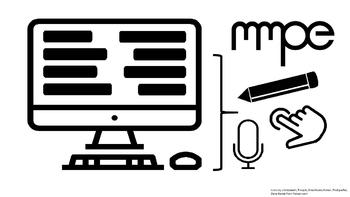Multi-modal Approaches for Post-Editing Machine Translation
Current advances in machine translation increase the need for translators to switch from traditional translation to post-editing (PE) of machine-translated text, a process that saves time and improves quality. This affects the design of translation interfaces, as the task changes from mainly generating text to correcting errors within otherwise helpful translation proposals. Our results of an elicitation study with professional translators indicate that a combination of pen, touch, and speech could well support common PE tasks, and received high subjective ratings by our participants. Therefore, we argue that future translation environment research should focus more strongly on these modalities in addition to mouse-and keyboard-based approaches. On the other hand, eye tracking and gesture modalities seem less important. An additional interview regarding interface design revealed that most translators would also see value in automatically re-ceiving additional resources when a high cognitive load is detected during PE.

Multi-modal Approaches for Post-Editing Machine Translation
Nico Herbig, Santanu Pal, Antonio Krüger, Josef van Genabith
Conference on Human Factors in Computing. ACM 2019
https://doi.org/10.1145/3290605.3300461 - Paper access
